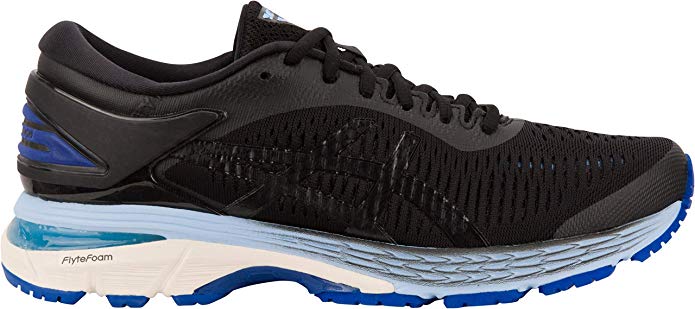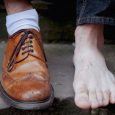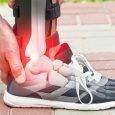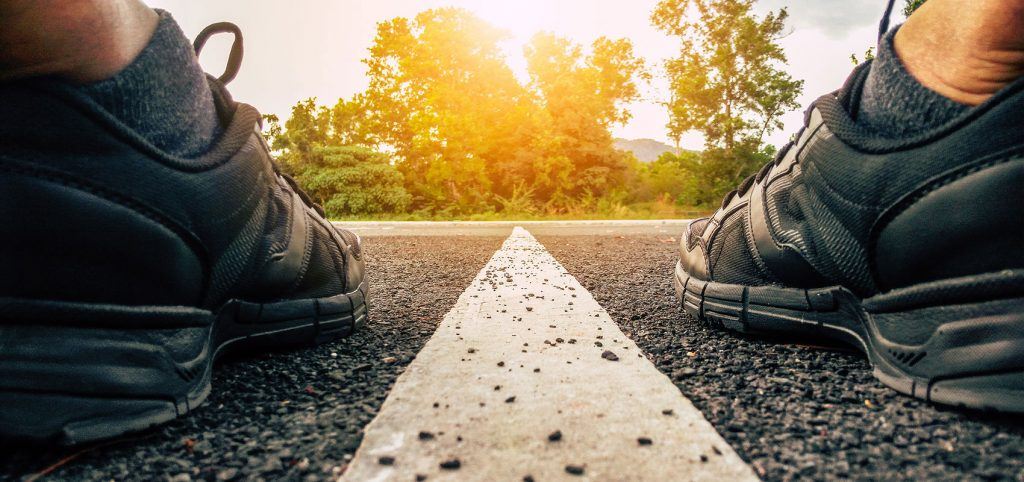
Many people love to run, not just dedicated runners, but sometimes injuries happen, such as shin splints, which can send even the best, most committed runner to the sidelines.
Shin splints, which occur when the muscle or tendon around the tibia (shin) becomes inflamed or torn, are caused in various ways, including excess mileage or running too much, too soon.
Fortunately, certain shoes can help prevent or lessen the issue, which is why we’ll cover the best running shoes for shin splints in this post.
We’ll discuss things to consider when buying running shoes, how to treat shin splints, and exercises to help prevent them.
Quick summary
Footwear Ox is reader-supported. When you buy through external links, we may earn an affiliate commission. Learn more.
 | Our #1 Choice Hoka One One Men’s Arahi Running Shoe |
| Check on Amazon → |
 | Asics Gel Kayano 25 SP Running Shoe |
| Check on Amazon (Men's) → |
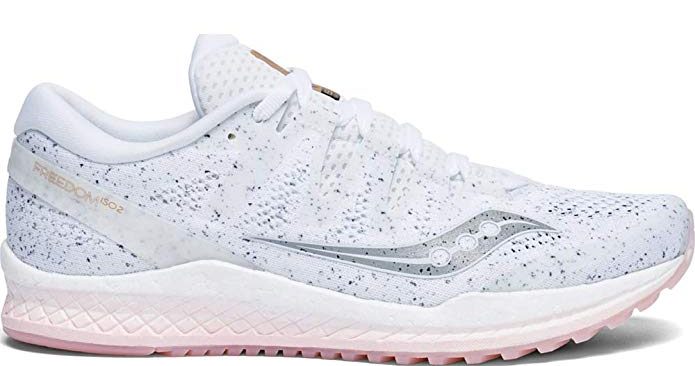 | Saucony Freedom ISO 2 Women’s Running Shoe |
| Check on Amazon → |
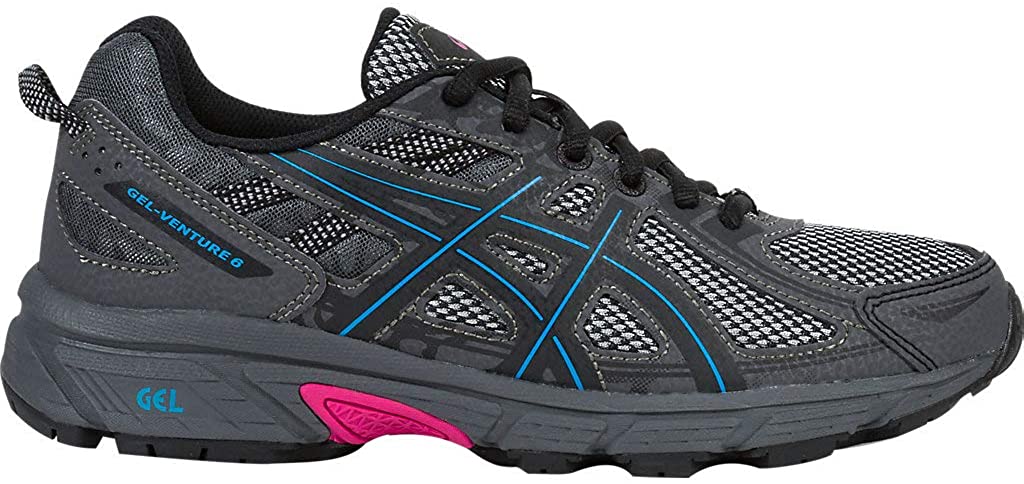 | ASICS Women's Gel-Venture 6 Running-Shoes |
| Check on Amazon → |
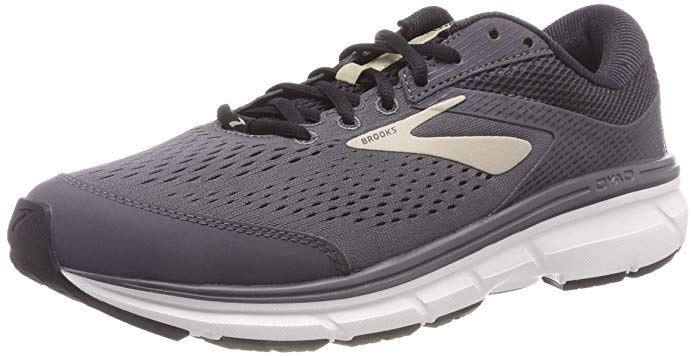 | Brooks Men’s Dyad 10 |
| Check on Amazon → |
 | Mizuno Wave Inspire 14 Running Shoes |
| Check on Amazon (Men's) → |
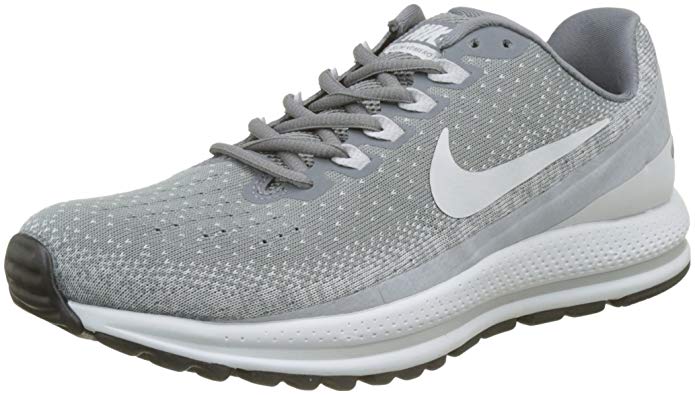 | Nike Air Zoom Vomero 13 Running Shoe |
| Check on Amazon (Men's) → |
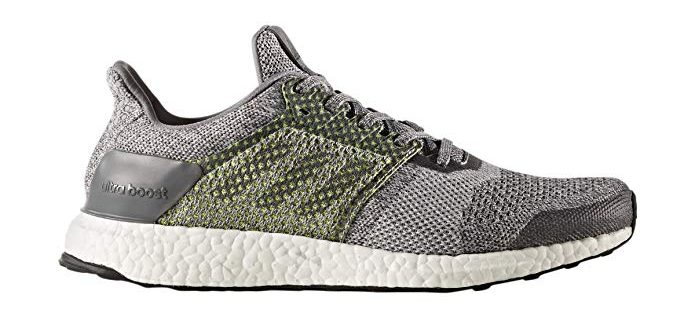 | Adidas Performance Men’s Ultra Boost Street Running Shoe |
| Check on Amazon → |
 | New Balance Women’s 1080V9 Running Shoe |
| Check on Amazon → |
Before You Buy: 5 Things to Consider When Purchasing Running Shoes for Shin Splints
Running experts will tell you that there’s no such thing as a shin splint running shoe. We agree and respect their opinion.
What they mean, however, is that you won’t find a shoe specifically designed for shin splints, but you can find plenty of shoes that make your running journey easier if you suffer from them.
Finding a shoe that helps ease your shin splints isn’t unlike discovering gold for all that it can do, from helping you to attain a better running form to providing more flexibility in your stride.
1. Cushion
Cushion is king and queen of running shoes, at least for most people. You can’t run comfortably without the proper cushion, and men and women who suffer from shin splints need plenty of it.
The extra cushion helps to absorb the shock of your foot impacting with the pavement or another running surface while alleviating the stress on your lower legs.
2. Support
Shoes designed to help make life easier for runners with shin splints should have excellent support that helps to balance your body as you run. Support also comes from knowing your stride: if you overpronate, your feet will roll inward when they impact with the ground and put more pressure on one area of the legs. Weight placed on the outside of your feet is called supination.
Whether your overpronate or supinate, too much force in a specific area of the leg can cause injuries, including shin splints, so you need to find a shoe with the kind of support that rebalances your body and distributes the impact equally throughout your legs.
3. Fit
Finding the right fit, like making sure the shoe has plenty of cushion and support, is crucial for anyone buying running shoes. When choosing a shoe to help alleviate shin splints, you need the kind of fit that provides a cushion in the right areas of your feet, such as a springy instep that reduces stress on the arch of your foot.
A snug fit can help prevent excess movement of your foot inside the shoe, which may help ease shin splint symptoms, but a fit that’s too snug won’t be comfortable and may lead to other problem with your legs and feet.
Additionally, you should look for a shoe in which the lacing design wraps comfortably around your foot but not too tightly or loosely.
4. The Heel & Arch
A phrase commonly heard when discussing running shoes is the shoe’s heel drop or, more specifically, the heel to toe drop. It’s a measurement of the difference in the height of a shoe between its heel and forefoot, and it’s an important factor to keep in mind when choosing the best running shoes for shin splints.
In general, shoes with a low heel drop should relieve pressure on your shins. Runners who experience tight calves and have an aggressive heel strike should probably shop for shoes with a higher drop. You also should look for shoes with extra cushion on the heel, especially if you’re a heel-striker.
Also, test the shoe’s arch support. Generally, the more arch support the better, if you’re a runner who suffers from shin splints.
5. Flexibility
The running shoes you choose should have enough flexibility that your shins can stretch.
There are other features you can look for when shopping for running shoes, such as breathable uppers that keep your feet cool and dry while running, but that’s a feature to consider in any shoe, not just those for runners with shin splints.
The 9 Best Running Shoes For Shin Splints For Men & Women
1. Hoka One One Men’s Arahi Running Shoe

The French company Hoka has only been around 10 years but has made a name for itself, thanks to its top-notch running shoes. Their men’s Arahi running shoes are an excellent example of their craftsmanship, as well as the best men’s running shoes to prevent shin splints.
In an era when minimalist running shoes enjoy a wave of popularity, Hoka first made its mark by producing running shoes with oversized soles – “maximalist” shoes, as it were.
If nothing else, however, Hoka shoes and excellent cushioning go hand in hand. The One One men’s running shoe has many unique features, including J-Frame technology that features firmer density foam without adding extra weight to the shoe. Nor is the shoe’s excellent flexibility compromised.
J-Frame technology also provides additional support to the heel and arch – always a good thing for anyone dealing with shin splints.
The Hoka One One is a premier running shoe for many other reasons, including:
- The shoe’s 3D Puff Print Frame upper is very lightweight while still offering a secure and comfortable fit around the foot. The shoe’s upper also features Air Mesh panels that release warm air while allowing cool air to circulate freely.
- The Arahi model features plush padding added to the tongue that prevents chafing and discomfort.
- Hoka’s Meta-Rocker Midsole features a low heel-to-toe differential that guides the foot through the runner’s natural gait cycle.
- The Arahi’s Zonal Rubber Outsole features durable rubber placed in areas along the outsole that tend to wear out more quickly.
All of the above features make the Hoka One One Arahi an excellent choice for any runner who suffers from shin splints, as well as for any runner who suffers from plantar fasciitis.
Pros
- J-Frame technology that offers superior support and protection
- Lightweight design
- Durable
Cons
- Sizes may run a bit small
Bottom Line
The Hoka One One Arahi has all the features needed in a shoe that’s suitable for anyone suffering from shin splints. From its lightweight, breathable design to its excellent durability, the Arahi is an excellent choice for all runners.
2. Asics Gel Kayano 25 SP Women’s Running Shoe
Asics Gel Kayano 25 SP Men’s Running Shoe

You have to hand it to the folks at Asics: they don’t rest on their laurels. Their iconic Gel Kayano shoe keeps getting better, which is good news for any runner, thanks to the ever-evolving technology for which Asics is known.
The Gel Kayano 25 comes in men’s and women’s versions, both of which include Asics’ latest features and tweaks.
Indeed, the Kayano 25 introduces several changes from previous models. For starters, the midsole’s visible forefoot Gel is no longer but instead features a new compound called Flytefoam Propel, which you’ll also find in Asics’ excellent Cumulus 20 model. Flytefoam Propel is designed to provide supreme bounce with every stride.
There are many other reasons why the 25 SP is a superior shoe for shin splints, including Asics’ unique Impact Guidance System Technology that enhances the runner’s natural gait from heel strike to toe-off.
The combination of Flytefoam Propel and Flytefoam Lyte technologies delivers not only excellent cushioning but also a shoe that’s lighter than the industry norm EVA (Ethylene-Vinyl Acetate). EVA is a soft, elastic material that’s also extremely durable.
The Kayano 25 SP’s midsole combines excellent bounce-back qualities with superior cushioning, while the shoe’s overall fit is enhanced by a mesh upper that stretches and adapts to the foot with every stride.
Among other updates included in this latest version of the Kayano 25 is a roomier forefoot and toebox.
Again, both the men’s and women’s versions of the Kayano 25 include the same unique features while allowing runners of both genders to have better form, which helps prevent stress-related issues, such as shin splints and sore knees. We also think that they’re the best women’s running shoes for shin splints.
Pros
- Superior shock-absorbing cushion
- Excellent shoe for running longer distances
- Lightweight feel and design
Cons
- Steeper price tag than with many other running shoes
Bottom Line
Asics improves an already superb product with its latest version of the Gel Kayano. It has all the features you’d expect from Asics, not the least of which is superior cushioning and a comfortable fit.
3. Saucony Freedom ISO 2 Women’s Running Shoe

Saucony, like Asics, continues its pursuit of the perfect running shoe. Its popular ISO model features a “makeover” that includes some new features which help make it an excellent choice of runners who suffer from shin splints.
The ISO 2 is ideal for neutral runners – those who don’t overpronate or supinate – but also suitable for all. They feature what Saucony calls a “sock-like” fit for superior comfort, as well as a low heel-to-toe drop that’s important to anyone dealing with shin splints.
The ISO’s cushioning is also second-to-none, and the upper consists of engineered stretch mesh that’s lightweight and very breathable. Your feet will remain cool and dry, even during your longest runs.
It also includes Saucony’s ISOFIT technology that adapts to the natural shape and motion of the foot and offers an excellent fit. The shoe’s tongue is thin but sufficiently padded, while a smooth fabric lining provides further overall comfort.
Additionally, the ISO 2 includes a full-length EVERUN midsole that evenly distributes the impact of each stride – another plus for shin splint sufferers – and a quality rubber outsole.
Note: There is also Saucony Men’s Freedom ISO 2 Running Shoe that includes all of the great features found in the women’s shoe.
Pros
- An excellent choice for neutral runners
- Comfortable, natural fit
- Midsole evenly distributes the impact
Cons
- Few if any, although some reviewers say to check sizing carefully before you buy
Bottom Line
Saucony has a hit on its hands with the Saucony Freedom ISO 2. It’s an excellent choice for men and women and for anyone who’s dealing with shin splints.
4. ASICS Women’s Gel-Venture 6 Running-Shoes
There’s a lot to love about ASCIS’ Gel-Venture 6 Running shoes for women, the follow up the much-loved but sadly discontinued Gel-Venture 5s:
- Their Rearfoot Gel Technology Cushioning System absorbs and weakens shock upon impact, which lessens the load for your lower legs, stopping your ankles, shins and knees from picking up unnecessary strain
- The ASICS High Abrasion Rubber Outsole is incredibly tough and durable, and gives great traction for uneven terrain
- The stitched-down toe bumper gives extra toe protection
- The removable sockliner allows you to easily adapt to medical orthotic
- The mesh upper gives great breathability and freedom to the feet
So overall, these are fantastic shoes for women who suffer from shin splints, have high arches or simply want an affordable pair of high quality running shoes. They are supremely comfortable, and will give you all the support you need for a long distance run or competitive sports.
Some do report finding they need to go up a half size to get the right fit, but as long as you consult the sizing charts, you should be totally fine ordering online.
Pros
- Great cushioning for the heels and ankle
- Toe protection is great
- Highly breathable and comfy
Cons
- Some reviewers find the toe a little tight, which isn’t ideal
Bottom Line
ASCIS’ Gel-Venture 6 is a worthy successor to the 5s, and provides a woman with shin trouble the perfect level of support and comfort she needs without breaking the bank.
5. Brooks Men’s Dyad 10

The Dyad 10 is the latest, greatest shoe in Brooks’ excellent Dyad line and includes a lot of features that make it an excellent shoe for runners with shin splints.
Superior stability is one of the Dyad 10’s many attributes, but the shoe also features streamlined construction and cushioning that distribute the impact of each stride evenly. Dual “arch pods” on the outsole offer additional support, as well as ideal stability underneath the arch of your foot.
While the Dyad is an all-around quality running shoe, people with wide feet or who need orthotics will particularly like these shoes and what they have to offer. They’re also excellent for neutral runners who don’t over or under pronate.
What else? Well, the Dyad 10’s forefoot includes an engineered mesh that provides excellent breathability, as well as an adaptable fit. The shoe’s cushioning design creates a comfortable fit – but not one that’s too soft.
An internal support saddle helps secure a good midfoot fit, while Brooks’ full-length S-257 cushioned midsole is flexible and very comfortable.
The Dyad 10 includes a padded tongue and collar, a breathable fabric liner, as well as a moisture-wicking sock liner that helps keep your foot dry while providing additional conditioning. We also like its heel crash pad that efficiently absorbs shock while ensuring smoother heel-to-toe transitions.
Finally, the Dyad 10’s abrasion-resistant outsole is very durable and very stable.
Pros
- Provides extra support
- Nice cushioning
- Adaptable fit and nice breathability
Cons
- Perhaps a bit heavier than some other shoes
Bottom Line
Brooks is an iconic name in the running shoe world, and their reputation comes from a long line of excellent shoes. The Dyad 10 represents another step forward and a shoe that’s a great choice for shin splint sufferers.
6. Mizuno Women’s Wave Inspire 14 Running Shoes

Mizuno Men’s Wave Inspire 14 Running Shoes

From the first step of your run to the last, Mizuno’s Inspire 14 running shoes will absorb the impact without putting extra strain on your lower legs and feet. Indeed, with its innovative design and superior shock absorption, the Inspire 14 is a great choice for any runner – not just runners who suffer from shin splints.
Mizuno’s emphasis on shock absorption comes, in part, from its Wave Technology that makes each landing of your foot smoother. This technology includes a wave plate within the shoe that disperses the energy of each impact when the foot strikes the ground. The thermo-plastic plate extends from the heel to the area of the shoe just beneath the ankle.
The midsole consists of Mizuno’s innovating U4ic foam that’s lightweight and responsive, as well as a U4icX Heel Wedge that’s even softer than the midsole foam.
All in all, it makes for a smooth ride, and you can feel the comfort and support, whether you’re running on the road, trail, or another surface. It’s a soft ride, to say the least, but also a very responsive one and one that serves you well for long and short runs.
You’ll also love the comfort of the Inspire 14’s breathable mesh upper that includes stitched-over synthetic overlays. Further comfort comes from a soft anatomical sock liner that helps support the arch while offering additional cushioning.
Pros
- Excellent shock absorption
- Soft yet responsive
- Extra room in the toe box
Cons
- Heel drop is a bit high
Bottom Line
The Mizuno Wave Inspire 14 is the shoe of choice for many men’s and women’s runners who suffer from overuse injuries, such as shin splints. It has all the features required for a comfortable, responsive run that won’t place excessive strain on your lower legs.
7. Nike Women’s Air Zoom Vomero 13 Running Shoe
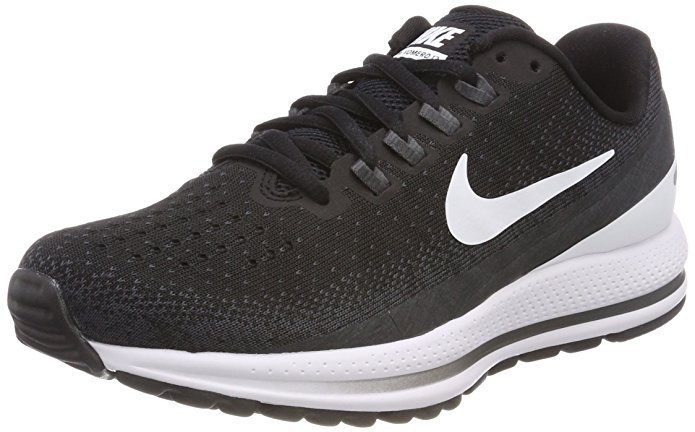
Nike Men’s Air Zoom Vomero 13 Running Shoe

What running shoe review is complete without at least one Nike entry? While there’s nothing that says Nike must be included in every review, the iconic giant of a company certainly cranks out some superior products, and it all started with their running shoes.
The Air Zoom Vomero 13 is representative of the overall quality of the Nike running shoe line and also a good option for shin splint sufferers. One of its key features is Flywire technology that, in short, keeps your feet from slipping in any one direction. In turn, it helps keep your body balanced as your foot impacts the ground, which helps prevent overuse injuries like plantar fasciitis, runner’s knee, and shin splints.
Among the Vomero 13’s many other features is a foam midsole that provides soft, plush cushioning that you’ll notice from the first step. The circular-knit upper is lightweight and breathable and fits snugly (but not too snugly).
The shoe’s rubber outsole offers further stability and support, as well as excellent traction. It’s also durable and enables you to log many miles before it’s time to buy a new pair.
Pros
- Extra foam cushioning
- Breathable and lightweight mesh upper
- Typical Nike quality
Cons
- Great for neutral runners, perhaps not as good for overpronators and supinators
Bottom Line
It’s hard to go wrong with a Nike running shoe, and the Air Zoom Vomero 13 is no exception. It’s a comfortable, breathable shoe that will help make each run a labor of love.
8. Adidas Performance Men’s Ultra Boost Street Running Shoe

The Adidas Men’s Ultra Boost Street running shoe offers the comfort and stability needed for dealing with shin splints but without sacrificing anything style-related.
It’s a good-looking shoe that sacrifices nothing regarding functionality, which is a nice combination, but it’s also an excellent shoe choice for shin splint sufferers and earns high marks for a variety of reasons.
The “Boost” part of the Adidas Street running shoe equation refers to “boost” pellets compressed into the arch of the midsole. The newest incarnation of the Ultra Boost Street shoe includes more pellets that counter the inward motion of the shoe, which is good news for overpronators.
The latest model also includes additional outsole rubber under the arch, which adds extra support, while the mesh upper includes external support straps and a heel wrap. The result is excellent stability and plush cushioning without adding extra weight to the shoe – or at least the feeling of additional weight.
The Ultra Boost street shoe also includes Adidas’s Primeknit technology that expands with your foot naturally while generating a comfortable foot with reduced irritation as you run.
The rubber outsole consists of another bit of Adidas technology – “Stretchweb” – that’s lightweight, elastic, stable, and suitable for wet and dry running conditions. There’s also an ergonomic heel structure for extra support.
Pros
- Nice upgrade of an already excellent model
- Excellent stability
- Nice design
Cons
- Check sizing carefully, especially if buying online
Bottom Line
The Adidas Men’s Ultra Boost marks another step ahead in a popular model of shoe. It offers the right combination of comfort, stability, and support.
9. New Balance Women’s 1080v9 Running Shoe

New Balance has upped the ante with the 1080 running shoe by, in part, collecting reams of data from real runners – both professional and leisure. The result is the version 9 shoe that features exceptional comfort – not that previous versions didn’t – thanks to a full-length foam midsole.
If anything, the midsole is softer than in previous versions, but not so soft that it creates a mushy feeling as you run. It’s a tad thicker than before, which helps create more comfort. Yes, it’s soft, but it still gives a protective feel.
The 1080v9 also includes an Ortholyte insert that provides additional support, which is ideal for runners with flat feet and who experience shin splints.
Another alteration found in the latest 1080 version is a molded heel that offers plenty of wrap and structure. Overall, the shoe feels a bit more forgiving than in the past, which we think you’ll like. The heel is perhaps thicker than in the past, but you’ll appreciate the extra support and how it lands and rolls easily with every stride.
Finally, the forefoot features roomy construction and mesh material that provides just the right amount of stretch.
Pros
- Comfortable full-length midsole
- Soft, cushioned feel
- Supportive fit with the right amount of stretch
Cons
- Some say the molded heel needs more padding
Bottom Line
New Balance spends a lot of money on research and development, and less on advertising, which helps them to keep upgrading their popular models, including the 1080. It’s a shoe that seemingly keeps getting better and better.
Running With Shin Splints? Follow These 8 Tips
One of the biggest causes of shin splints is doing too much too soon. You may know the drill: a runner builds up his or her mileage too quickly – often with a shoe that doesn’t fit their style of running or even doesn’t fit properly.
If you have shin splints, remember that overuse is your enemy. You won’t get rid of shin splints by running more; in fact, you’ll risk suffering more serious injuries, such as a stress fracture.
So, progress slowly regarding your mileage, even if the itch to crank out longer distances is strong. Many running experts say that a sensible program for building mileage is to run no more than 10% over your previous week’s mileage or pace.
But there are other things you can do, too.
1. Warm-Up Before Every Run
Runners can come up with a million excuses for why it’s OK not to warm-up before a run: there’s not enough time, the muscles already are loose enough, warming up is boring, etc. If you’re one of those people, it’s time to change.
Following a good pre-run routine reduces the chances of getting shin splints while also helping with the healing process. Even running in place for a few minutes is a good place to start, as long as you’re not pushing it too hard.
It’s also a good idea to stretch your calves, hamstrings, and quadriceps before you hit the road or trail.
2. Get Properly Fitted For Running Shoes
We’ve discussed how important it is to find the right-fitting running shoes if you suffer from shin splints (or for any runner, for that matter). We’ve talked about overpronation and the importance of finding a shoe with plenty of stability; the bottom line is that there are so many variations in stride and overall needs that having a professional – like someone at a running store – help you to find the right fit is essential.
And whatever you do, don’t keep running in shoes that are old and worn out. You’ll risk injury, including shin splints, and the shoes will lose their overall effectiveness.
3. Get Plenty of Rest (And Use Ice)
Many runners can’t bear the idea of taking time off, but giving yourself a little break often is the perfect formula for getting rid of shin splints. Take some time to heal – at least until the soreness subsides – and increase your mileage slowly when you begin running again.
Remember: rest is often your best friend. Taking some time off can help prevent serious injuries in the future. How much rest is enough? Your body, namely your lower legs, will let you know when you’ve rested long enough, but it may take several weeks. That’s why cross-training is your friend, which we’ll discuss in a bit.
It’s also helpful to ice your shins to help reduce the inflammation during your downtime, and taking ibuprofen helps with the swelling and inflammation.
4. Don’t Always Run on the Same Surface
Varying your running surfaces can help reduce your chances of getting shin splints. If you primarily run on hard surfaces, mix it up and run on grass or a gentle trail. Your legs will get a slightly different workout, depending on the surface you choose.
While the subject is a matter of debate, some experts say that using a thinner shoe to run on harder surfaces is a better alternative than running with a thicker shoe. Research into biomechanics links running with soft shoes on soft surfaces to increased leg stiffness.
5. Mix Things Up With Cross-Training
Serious runners hate to miss a day, or at least too many days, but a brief break from running is a good prescription for healing shin splints. Unless the pain is unbearable (which may indicate more serious injuries), there’s nothing to stop you from doing other types of exercises, like spinning, cycling outdoors, lap swimming, yoga, and much more.
6. Stabilizing Your Shin
It’s important to keep your shins secure and stable during your run, and finding the right shoes will help with it, but you can also wrap your shins with a bandage and wear compression socks or sleeves to keep things stable, as well.
7. Don’t Overstride
You may be guilty of overstriding, i.e. taking strides that are too long, when you run. Overstriding may lead to shin splints, because it puts increased stress on the heel when you land, as well as extra strain on your ankles and muscles of the lower leg.
One method for correcting overstriding is to count the number of strides you take for one minute. You can then adjust your stride accordingly – which means you’ll take shorter strides but more steps.
8. Consider Using Orthotics
Using custom shoe orthotics may help lessen the impact that running places on the tibia, or at least distribute the impact more evenly. Many runners reap plenty of benefits from orthotics, while others find they’re no help or that they’re just not comfortable.
9 Exercises You Can Do To Help Deal With Shin Splints
We just covered some strategies and tips you can follow while you run that can help alleviate the symptoms of shin splints. There are also a variety of exercises you can do that help prevent shin splints and ensure that you spend more time running and less or no time on the sidelines.
Toe Curls
Nothing too complicated here: simply stand with your feet hip-width apart and curl your toes 10 or 15 times with one foot and then repeat with the other foot. A variation of this exercise involves stepping on a towel and then curling your toes as if pulling the towel toward you.
ABCs
Remember learning your ABCs as a youngster? Let’s go back in time with an exercise that’s excellent for stretching your lower legs and feet: lift one foot slightly above the ground as you stand or sit and then “write” out the entire alphabet with your foot. Repeat with the other foot. For best results, try using just your foot and ankle.
Alternate Walking
Another good exercise for preventing shin splints is to walk on your heels for 30 seconds and then walk regularly for another 30 seconds. This exercise will strengthen your calf and shin muscles, and you can do it two or three times a day if you wish.
Point & Flex
Standing with your hands on your hips, raise one leg straight out in front of you and flex your toes toward the shin and then point the toes away from your shin. Do 10 to 15 reps with each leg (one rep consists of pointing your toes in both directions).
Calf Stretches
Consistently stretching your calves is an excellent way to ward off shin splints; in fact, many people experience shin splints in the calves, because tight calves pull on your shins. A good calf stretch involves standing close to a wall – or a curb or step – and, while keeping your heel planted on the ground, you raise your toes up the wall or curb. Keep your leg straight except for a soft bend in the knee. You add or remove pressure by leaning forward or back.
Foam Rolling Roll-Outs
Foam rollers offer a variety of stretching exercises for all parts of the body, including the calves and other parts of the lower leg. An excellent shin splint preventive exercise involves kneeling on the roller while gently rolling two inches up and down on the front or your shin. Roll from the ankle to the lower knee and back again.
Yoga Toes
Another excellent toe stretching exercise is yoga toes. A simple but effective stretch, you simply spread your toes out as wide as possible before relaxing them. Repeat this stretch 10 times with each foot.
Resistance Band Exercises
Resistance bands are very useful for a variety of exercises and stretches, including stretches that can help keep shin splints at bay. One exercise that helps build strength in your lower legs is the resistance band wiper. To do it, place the resistance band around both feet and then move the foot in a side-to-side motion that resembles the movement of a windshield wiper. Do 20 reps with one foot and then switch to the other.
Toe raises
Another simple-but-effective exercise is the toe raise, in which you stand with your heels together (toes pointed out) and raise on your toes and then lower back down. Repeat this movement 10 times with each foot.
Why We Chose These Shoes For Our Review
While there is a mountain of quality running shoes available to today’s buyer, not every shoe is ideal for those runners who suffer from shin splints. Our goal was to find the shoes that had the right combination of elements, including support and cushioning, to make things easier for anyone suffering from lower leg issues.
Fashion and, to some degree, price were of lesser concern as we researched the various brands and models of shoes. We like shoes that look good and are priced fairly, but a shoe that offers support, stability, and comfort is worth the investment, no matter how much it costs or looks.
Conclusion
You need to choose wisely if you’re a dedicated runner who occasionally suffers from shin splints. Not every great running shoe out there, and there are a lot of them, fits your specific needs. Hopefully, this list will help you run longer, better, and pain-free.
How about you? Do you wear running shoes designed to alleviate shin splint pain and discomfort? If so, what shoes do you use? We always welcome your feedback.
YOU MIGHT ALSO LIKE:
8 Ways to Be Kind to Your Feet After Standing at Work All Day
Best Shoes for Standing All Day for Men and Women
Best Shoes Every Woman Boss Should Have in Her Closet
Best & Most Comfortable Nursing Shoes For Men & Women
Best Running Shoes For Bad Knees: Reviewed (Men & Women)
Best & Most Comfortable Driving Shoes For Men & Women
4 Ways How To Lace Dress Shoes Like A Pro In Under 10 Minutes

